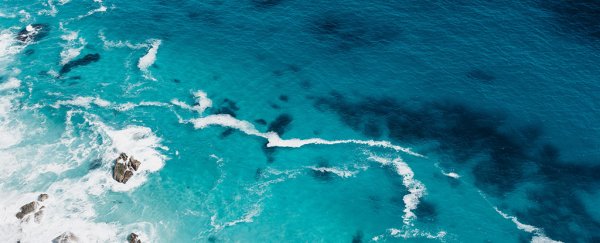Sand dunes formed in the last Ice Age have been discovered hidden in the ocean off the east coast of Australia, according to remarkable new research.
Just how these ancient dunes survived rising waters represents something of a geological mystery, but scientists think the sandy masses hardened to stone before being submerged by the sea some 12,000 years ago – which is how they continue to exist even today.
The dunes stretch for 70 kilometres (43 miles) between Fraser Island and Moreton Island in the state of Queensland, according to a report on the research by Australia's ABC News. In fact, the researchers say, they would have originally looked a lot like the sand dunes that cover Fraser Island today.
"I think the intriguing thing is what mechanism enabled them to be so well preserved," one of the team, Tiago Passos from the University of Sydney, told ABC's Anna Salleh.
The undulating dunes were first picked up by sonar imaging during an expedition to the Great Barrier Reef, but the new study has established what these structures – located 60 metres (197 feet) underwater and standing 10-15 metres (33-49 feet) high – actually represent.
There is one intriguing difference between these ancient sand dunes and their modern day equivalents, though: the presence of calcium carbonate, instead of quartz, inside the grains.
That calcium carbonate was crucial in the chemical reactions that hardened and preserved the rock, the researchers think, enabling a process known as diagenesis. Fresh water in rain would have helped solidify the sediments, according to the team.
Based on samples collected and analysed by the researchers, the submerged grains of sand were cemented together before being buried by the waves over thousands of years.
Impressive as the find is, however, it's not quite unique – this type of sand calcification can be seen in other places on Earth, like the famous sandstone curves of The Wave in Arizona.
In the case of the Wave, it was groundwater and pressure that fossilised the sand, and the Arizona formation significantly pre-dates the new discovery: the rocks were formed from about 190 million years ago, rather than 12,000 years ago.
Eventually, the findings detailed in the new study could help answer more questions about how rocky sand dunes form in the first place, giving us new insights into how mounds of grains heap into one spot through a combination of wind and obstacles.
But modern day sands, like the ones on Fraser Island, are unlikely to meet a similar fate, the researchers say, as they've got a different chemical composition.
"They would be eroded, as they don't have enough carbonate content to turn them into rock," Passos told ABC News.
The research will soon be published in the Australian Journal of Earth Sciences.
